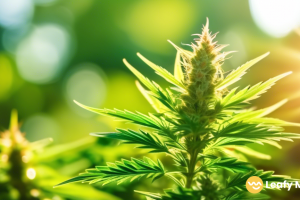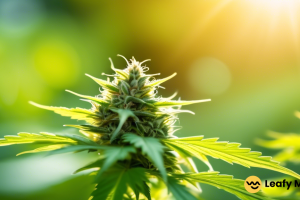Imagine stepping outside into the fresh air, surrounded by the vibrant colors and intoxicating aroma of your very own outdoor cannabis garden. The sun gently kisses your skin as you tend to your plants, knowing that each technique you employ will contribute to the success of your crop. In this article, we will explore the different techniques for outdoor cannabis growing, offering you valuable insights and tips to help you cultivate a thriving garden.
Choosing the right outdoor growing location is like finding the perfect canvas for your masterpiece. Symbolizing the foundation of your growing journey, this decision sets the stage for the growth and development of your plants. Whether you have a spacious backyard or a hidden spot in the wilderness, selecting a location with ample sunlight, good air circulation, and well-drained soil is important.
Don’t underestimate the power of symbolism when it comes to your cannabis garden – just as you carefully choose the right location, each subsequent technique you employ will contribute to the masterpiece that is your outdoor cannabis crop.
Choosing the Right Outdoor Growing Location
When choosing a location, it’s important to prioritize factors such as sunlight, privacy, and accessibility. Cannabis plants require a minimum of 6 hours of direct sunlight each day, so look for a spot in your yard that receives ample sunlight throughout the day. Avoid areas that are shaded by tall buildings, trees, or other structures.
Additionally, consider the privacy of your chosen location. Cannabis cultivation may not be legal in all areas, so it’s important to choose a spot that is discreet and hidden from view to minimize the risk of theft or legal issues.
In addition to sunlight and privacy, accessibility is another important factor to consider when choosing an outdoor growing location for your cannabis plants. You’ll need regular access to your plants for tasks such as watering, pruning, and harvesting. Therefore, it’s important to choose a location that is easily accessible, both for your convenience and to prevent damage to the plants during maintenance. Consider the distance from your home, the terrain of the area, and any potential obstacles that may hinder your access.
Selecting the Ideal Cannabis Strains
Selecting the ideal cannabis strains involves considering various factors such as desired effects, growth characteristics, and adaptation to outdoor environments.
When choosing strains for outdoor cultivation, it’s important to think about the specific effects you’re looking for. Some strains may provide a more uplifting and energetic high, while others may be more relaxing and calming. Determine whether you want a strain that boosts creativity and focus or one that helps with pain relief and relaxation.
Additionally, consider the growth characteristics of the strains. Some strains may grow tall and require ample space, while others may be more compact and suitable for smaller outdoor gardens.
In terms of adaptation to outdoor environments, it’s significant to select strains that are resilient and can thrive in your specific climate. Consider factors such as temperature, humidity, and precipitation levels in your region. Some strains may be better suited for warmer climates, while others may be more resistant to colder temperatures.
Another important consideration is disease and pest resistance. Look for strains that have a reputation for being resistant to common cannabis pests and diseases. By taking all of these factors into account, you can select the ideal cannabis strains that’ll flourish in your outdoor garden.
Preparing the Soil and Planting Techniques
First, make sure to properly prepare the soil by tilling it and removing any weeds or debris. This is an important step in ensuring that your cannabis plants have a healthy and nutrient-rich environment to grow in. Tilling the soil helps to break up any compacted areas and allows for better root penetration. It also helps to mix in any amendments or fertilizers that you may be using.
Once the soil is tilled, it’s important to remove any weeds or debris that may compete with your cannabis plants for nutrients and sunlight. This can be done by hand or with the use of a garden hoe or rake. Taking the time to properly prepare the soil will greatly increase your chances of having a successful outdoor cannabis grow.
To further emphasize the importance of preparing the soil, here is a table highlighting the benefits of tilling and removing weeds and debris:
| Benefits of Preparing the Soil |
|---|
| 1. Loosens compacted soil |
| 4. Helps to mix in amendments and fertilizers |
By tilling the soil and removing any weeds or debris, you are creating an optimal environment for your cannabis plants to thrive. This will result in healthier plants, higher yields, and more successful outdoor growth. So take the time to properly prepare your soil before planting, and you will set yourself up for a successful cannabis growing season.
Implementing Proper Watering and Nutrient Management
Once you’ve got your outdoor cannabis garden set up, it’s essential to ensure proper watering and nutrient management for optimal growth.
Here are some tips to help you implement the right techniques:
- Watering: Make sure to water your cannabis plants regularly, but be careful not to overwater them. Cannabis plants prefer moist soil, but not waterlogged conditions. Water deeply and thoroughly, allowing the water to penetrate the root zone. Avoid watering during the hottest part of the day to prevent evaporation. Monitor the moisture levels of the soil and adjust your watering schedule accordingly.
- Nutrient Management: Cannabis plants require a balance of nutrients for healthy growth. Use a high-quality fertilizer specifically formulated for cannabis cultivation. Start with a balanced fertilizer during the vegetative stage and switch to a bloom-specific fertilizer during the flowering stage. Pay attention to the nutrient ratios and adjust accordingly based on the needs of your plants. Regularly test the pH levels of your soil to ensure optimal nutrient uptake.
- Compost and Organic Matter: Incorporate compost and organic matter into your soil to enhance its nutrient content. Compost provides a slow release of nutrients and improves soil structure. Organic matter helps retain moisture in the soil and promotes beneficial microbial activity. Consider using worm castings, bat guano, or other organic amendments to enrich your soil.
- Mulching: Apply a layer of organic mulch around your cannabis plants to help conserve moisture and regulate soil temperature. Mulch acts as a barrier, preventing evaporation and reducing weed growth. It also adds organic matter to the soil as it breaks down, providing additional nutrients over time.
Protecting Your Outdoor Cannabis Crop
To safeguard your outdoor cannabis crop, it’s important to implement protective measures. One of the main threats to your crop is pests and insects. These can cause significant damage and even destroy your plants if left unchecked. To protect against these pests, consider using natural insecticides or companion plants that repel insects.
Another important aspect of protecting your outdoor cannabis crop is ensuring proper security measures. Unfortunately, theft and vandalism are risks that come with growing cannabis outdoors. To minimize these risks, consider installing a fence or using camouflage techniques to make your plants less visible.
It’s also advisable to have proper lighting and surveillance cameras in place to deter potential thieves. Lastly, make sure to keep your growing location discreet and avoid sharing too much information about your crop with others.
By implementing these protective measures, you can greatly increase the chances of successful outdoor cannabis growth. It’s important to be proactive and stay vigilant throughout the growing season to ensure the health and security of your plants.
Frequently Asked Questions
How can I prevent pests and diseases from affecting my outdoor cannabis crop?
To prevent pests and diseases from harming your outdoor cannabis crop, there are a few key steps you can take. Use organic pest control methods, regularly inspect your plants, practice good sanitation, and consider companion planting to deter pests.
What are some common mistakes to avoid when growing cannabis outdoors?
To avoid common mistakes when growing cannabis outdoors, be mindful of overwatering, as it can drown your plants. Also, ensure sufficient sunlight and proper air circulation to prevent mold and mildew.
Are there any specific weather conditions that are ideal for outdoor cannabis cultivation?
Ideal weather conditions for outdoor cannabis cultivation include warm temperatures between 70-85°F, plenty of sunlight, and low humidity. Additionally, a gentle breeze can help prevent mold and pests. Regular watering and protection from heavy rain or strong winds are also important.
How can I ensure maximum yield and potency when growing cannabis outdoors?
To achieve maximum yield and potency when growing cannabis outdoors, you must become a master of the elements. Harness the power of the sun, dance with the rain, and caress the soil with love and care.
What are the legal considerations and regulations for growing cannabis outdoors in my area?
To ensure maximum yield and potency when growing cannabis outdoors, it’s important to consider the legal aspects of your area. Research local regulations and follow them closely to avoid any legal issues.











Leave a Reply